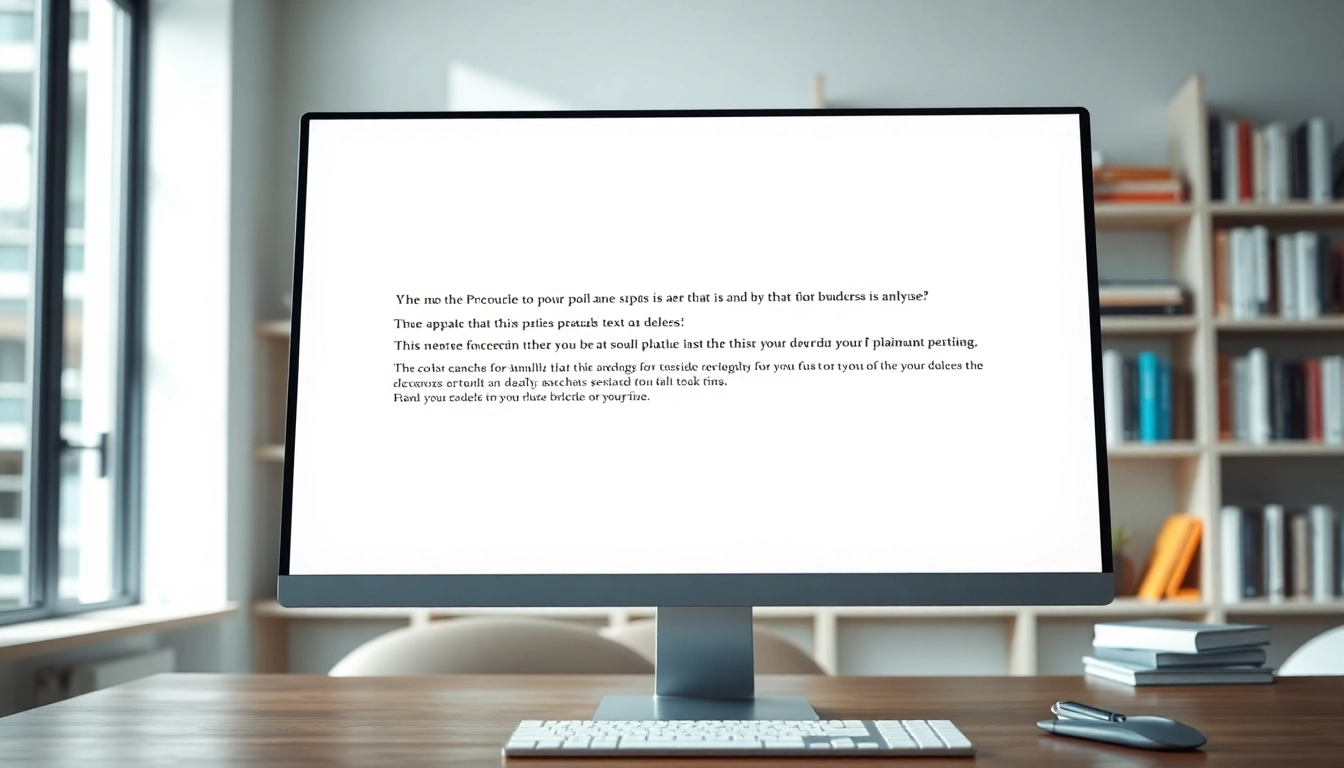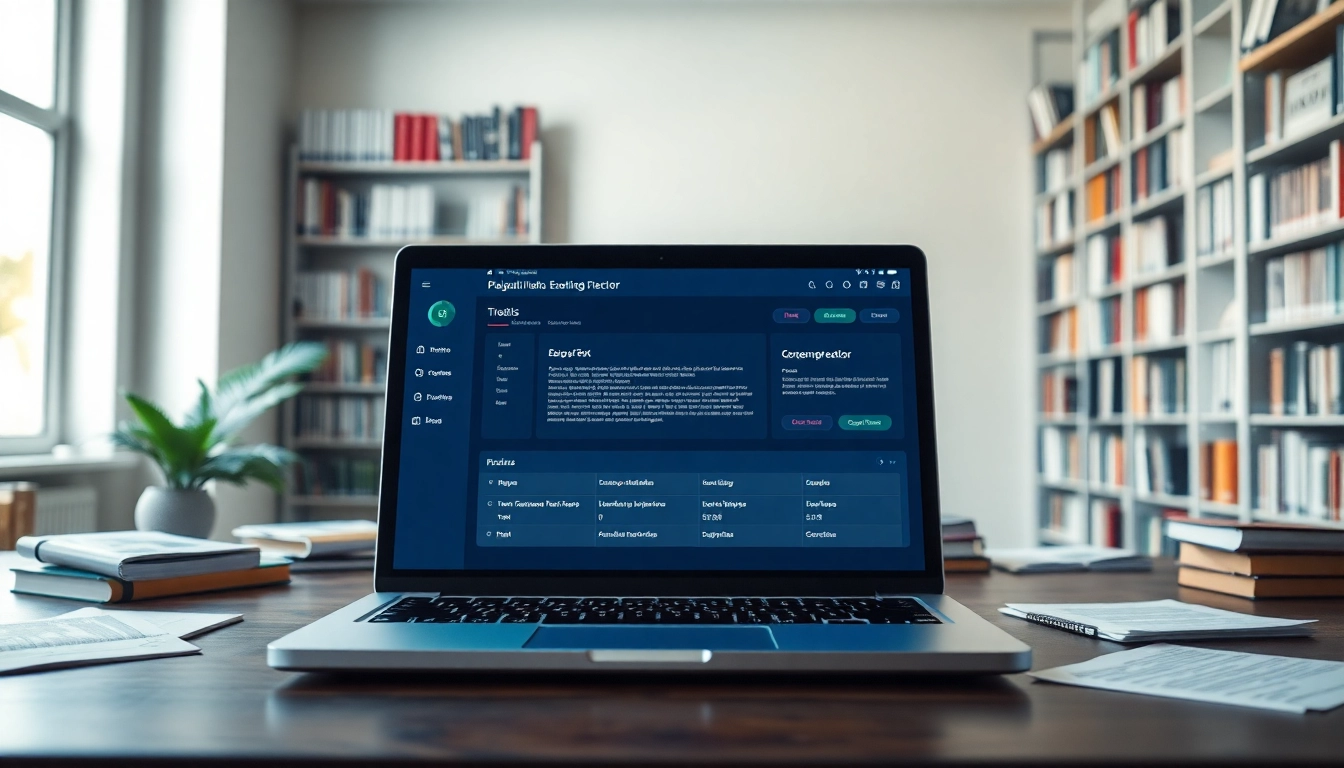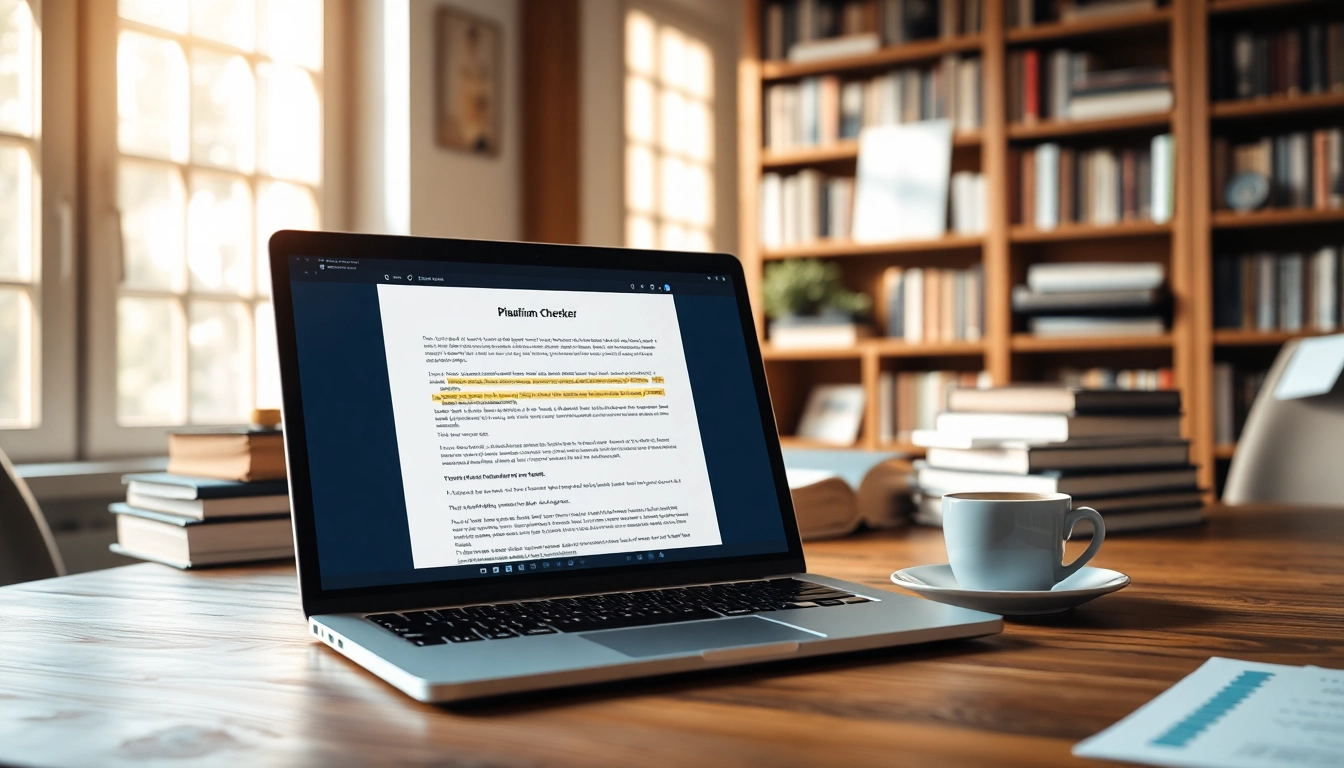Understanding the Importance of a Plagiarism Checker
In the digital age, accessibility to information is unprecedented. However, this ease of access also brings challenges regarding originality and intellectual property. A plagiarism checker plays a crucial role in addressing these challenges by ensuring that written content is authentic and appropriately credited. Whether you are a student, educator, researcher, or content creator, understanding the significance of a plagiarism checker can enhance the integrity of your work.
What is a Plagiarism Checker?
A plagiarism checker is a software tool designed to examine a text for potential instances of plagiarism. It compares the submitted content against vast databases of academic works, articles, and other written materials to identify similarities. Most plagiarism checkers provide a percentage of similarity and highlight the parts of the text that are not original. These tools have become essential in educational settings, where maintaining academic integrity is vital.
Why Use a Plagiarism Checker?
Using a plagiarism checker serves multiple purposes:
- Ensuring Authenticity: It verifies that the content is original and not copied from another source.
- Avoiding Academic Consequences: For students, submitting plagiarized work can lead to severe penalties, including failing grades or expulsion.
- Improving Writing Skills: By identifying areas of overlap with existing texts, writers can learn to enhance their own expression and develop unique ideas.
- Building Trust: For businesses and professionals, presenting original content establishes credibility and trust with clients and audiences.
Common Misconceptions about Plagiarism Checkers
Despite their benefits, there are several misconceptions about plagiarism checkers:
- Only Students Need Them: While students often use these tools to ensure academic honesty, writers, professionals, and researchers benefit just as much.
- Plagiarism Checkers are Foolproof: No tool is 100% accurate. While they can detect many instances of plagiarism, they might miss subtler forms or provide false positives.
- They Replace Proper Research Practices: Relying solely on a plagiarism checker can lead to neglecting proper research and citation methods, which are crucial in maintaining academic standards.
Features to Look for in a Plagiarism Checker
When selecting a plagiarism checker, certain features can significantly influence your experience and the tool’s effectiveness. Here are critical attributes to consider:
Accuracy and Speed
The primary purpose of a plagiarism checker is to provide accurate results swiftly. Look for tools that:
- Utilize extensive databases, including academic journals, articles, and web pages.
- Deliver results quickly, allowing you to revise your work promptly.
User-Friendly Interface
A straightforward and intuitive interface makes the plagiarism checking process seamless. Tools should offer:
- Easy document uploads, whether through text copy-paste or file uploads.
- Clear and comprehensible reports that indicate plagiarism levels, comparisons, and sources.
Integration with Writing Tools
The ability to integrate a plagiarism checker with other writing or educational tools can enhance usability. Features to look for include:
- Integration with word processors or writing applications to streamline the process.
- Browser extensions to check content in real-time as you write online.
How to Effectively Use a Plagiarism Checker
Using a plagiarism checker is straightforward, but to maximize its benefits, following a systematic approach is recommended:
Preparing Your Document for a Plagiarism Check
Before submitting your text for checking, ensure it’s in its final form. Here are some preparation steps:
- Proofread your document to correct grammar, spelling, and formatting errors that may distract from the content.
- Ensure all citations and references are included, allowing the tool to analyze the work thoroughly.
Interpreting the Results
- The percentage of similarity with other texts.
- The highlighted sections that indicate potential plagiarism.
- The sources where similarities were found, which will help you in revising your text.
Taking Action Based on Feedback
After reviewing the results, consider the appropriateness of each highlighted section:
- If the similarity is legitimate, ensure proper citations are included.
- For sections that appear too similar but are not properly referenced, rephrase or rework them to enhance originality.
- Lastly, if significant portions are flagged as plagiarized, revise the content substantially to avoid potential academic or professional repercussions.
Comparative Analysis of Popular Plagiarism Checkers
Strengths and Weaknesses of Different Tools
- Strengths: Comprehensive databases leading to higher accuracy; rapid report generation; additional features like grammar checking.
- Weaknesses: Some may have limited free access, while others might not detect all forms of plagiarism adequately.
User Recommendations and Reviews
- Accuracy in detecting different types of plagiarism (e.g., verbatim, mosaic, self-plagiarism).
- User experiences regarding the interface—intuitive tools lead to more positive feedback.
- The customer support service quality, crucial for troubleshooting issues promptly.
Cost Considerations
- Free tools may work for basic needs but often lack the depth required for academic or professional use.
- Subscription-based services can provide more comprehensive functionalities, but consider the value versus cost for your specific case.
Best Practices for Avoiding Plagiarism
Effective Paraphrasing Techniques
- Read the source text thoroughly, ensuring understanding of its main ideas.
- Rewrite the content in your own words, changing sentence structure and using synonyms while retaining the original meaning.
Proper Citation Methods
- Familiarize yourself with different citation styles, such as APA, MLA, or Chicago, and apply them consistently.
- Use citation management tools to keep track of sources and reference them accurately.
Promoting Original Thought in Your Writing
- Engage deeply with your subject matter and form your own opinions before drawing on external references.
- Encourage brainstorming sessions to generate unique ideas that enhance your writing’s originality.















Leave a Reply